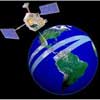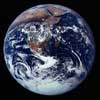|
Sunday:
May 7, 2000 | |
0643 GMT |
 |
Data from NASA satellite improves tropical forecasts
A microwave imager onboard a NASA spacecraft can help improve the forecasts of hurricanes, severe storms, and monitor long-term climate by seeing through clouds, new research shows.
 FULL STORY FULL STORY
 |  |

|
 |
U.S. weather satellite moving into higher orbit
The second in a series of orbital maneuvers is planned today for the newest U.S. weather satellite launched on Wednesday. The GOES-L spacecraft is slated to fire its liquid-fueled apogee kick engine for about a half-hour.
 FULL STORY FULL STORY
 |  |

|
 |
Surrey pioneers a new breed of nano-satellites
SSTL's first nanosatellite, SNAP-1, is being completed for launch in June 2000 at the Surrey Space Centre. SNAP-1 is a highly-integrated and sophisticated spacecraft weighing just 6kg.
 FULL STORY FULL STORY
 |  |

|
 |
|
Saturday:
May 6, 2000 | |
0233 GMT |
 |
Titan 4 to leave troubles behind with Monday launch
A U.S. Air Force Titan 4B rocket is finally ready for liftoff Monday after a tumultuous stay on the launch pad that included an oil leak scare and two recalls for parts installed inside the booster.
 FULL STORY FULL STORY
 |  |

|
 |
Venus, Earth flybys prepare Saturn-bound Cassini probe
European scientists with the Cassini space mission report the swingbys around Venus and the Earth have not only allowed an unique opportunity for calibration operations, but had also been bringing a considerable amount of science data.
 FULL STORY FULL STORY
 |  |

|
 |
Light and shadow create strange shapes on Eros
Asteroid Eros' irregular shape creates interesting and beautiful scenes where the Sun shines obliquely on the surface. In the absence of an atmosphere, shade appears nearly as black as space.
 FULL STORY FULL STORY
 |  |

|
 |
DAILY BRIEFING Other stories making news today
|
 |
Lasers shine new light on gravity waves -- Gravitational waves seem to offer astrophysicists the best hope of studying objects composed of dark matter, but the problems are considerable. A team at Adelaide University in South Australia is working on the project to achieve a better understanding of some of the most elusive mysteries of the universe.
|
 |
|
Friday:
May 5, 2000 | |
0147 GMT |
 |
Planets get lined up today
The planets, jointly taunting doomsayers, dance together today as Mercury, Venus, the Moon, Mars, Jupiter, Saturn and the Sun are aligned with Earth.
 FULL STORY FULL STORY
 |  |

|
 |
Astronomers find giant metal dog bone asteroid
NASA astronomers have collected the first-ever radar images of a "main belt" asteroid, a metallic, dog bone-shaped rock the size of New Jersey, an apparent leftover from an ancient, violent cosmic collision. The asteroid, named 216 Kleopatra, measures about 135 miles long and about 58 miles wide.
 FULL STORY FULL STORY
 |  |

|
 |
The view of asteroid Eros from low orbit
NASA's NEAR Shoemaker spacecraft has returned one of its first images of the asteroid Eros from "low orbit." Between May and August, the probe will orbit at altitudes near 31 miles or less.
 FULL STORY FULL STORY
 |  |

|
 |
DAILY BRIEFING Other stories making news today
|
 |
Delta rocket debris survives reentry, lands in South Africa -- The sound of thunder filled the air over Worcester in South Africa's Western Cape province on April 27. A ball of white-hot metal crashed to Earth, most probably part of a Delta rocket launched in March 1996.
|
 |
NEWSWIRE Links to news across the internet
|
 |
Smithsonian shows space butterflies -- (AP/Yahoo!) Butterflies born and raised in space last summer took their spot Thursday among the exhibits at the Smithsonian's Air and Space Museum, while the students responsible for their voyage stole the show at Space Day 2000 festivities.

Kranz details ups, downs of NASA's mission control -- (Houston Chronicle) Gene Kranz, the charismatic NASA flight director, offers his own memories of Apollo in Failure Is Not an Option, a rich behind-the-scenes account of the experts behind the astronauts, the less-well-known professionals who held the lives of America's first space explorers in their hands.
|
 |
|
Thursday:
May 4, 2000 | |
0139 GMT |
 |
Io's volcanoes splatter dust into the solar system
Fiery volcanoes on Jupiter's moon Io are the main source of dust streams that flow from the Jupiter system into the rest of the solar system, according to new findings from NASA's Galileo spacecraft analyzed by an international team of scientists.
 FULL STORY FULL STORY
 |  |

|
 |
Hubble finds much of universe's lost hydrogen
For the past decade astronomers have looked for vast quantities of hydrogen that were cooked-up in the Big Bang but somehow managed to disappear into the empty blackness of space. Now, NASA's Hubble Space Telescope has uncovered this long-sought missing hydrogen.
 FULL STORY FULL STORY
 |  |

|
 |
NASA trying to predict killer tornadoes from space
Each spring we witness dramatic increases in the frequency and strength of severe storm systems, as evidenced by last year's tornado outbreak in Oklahoma. Scientists at NASA are developing instruments to understand and predict these intense storms with greater speed and precision.
 FULL STORY FULL STORY
 |  |

|
 |
DAILY BRIEFING Other stories making news today
|
 |
Boeing Delta 2 receives NASA's George M. Low Award -- Commitment to innovative management, quality and customer service earned the Boeing Delta 2 launch team NASA's George M. Low award. This award is NASA's highest honor for quality and technical performance.
|
 |
NEWSWIRE Links to news across the internet
|
 |
NASA mulling new roadmap for Mars -- (Reuters/Yahoo!) Five months after the loss of NASA's Mars Polar Lander, U.S. space agency officials said on Wednesday they expect a "new architecture" for exploring the Red Planet by year's end.

Astronomers detail budget planetary missions -- (Reuters/Yahoo!) They plan to visit Mars, Mercury, even Jupiter's icy moon Europa, but the world's space scientists acknowledged on Tuesday they will have to do it on a budget.

Motorola still hopes to find a buyer for Iridium -- (Reuters/Yahoo!) Technology company Motorola Inc. says it still hoped to find a buyer for Iridium LLC, the financially troubled satellite telephone company it bankrolled, and the satellites have not yet been destroyed.
|
 |
|
Wednesday:
May 3, 2000 | |
0803 GMT |
 |
U.S. has a new weather satellite circling Earth
The United States launched its newest weather-watching satellite early today to ensure forecasters have accurate information during this summer's predicted active hurricane season.
 FULL STORY FULL STORY
 MISSION STATUS CENTER MISSION STATUS CENTER
 |  |

|
 |
Were the dinosaurs fried by ultraviolet light?
Over the past few decades, the rise and fall of the dinosaurs has captured the imagination of the public and the scientific community alike. While it is clear that the impact of a large asteroid straddling the coastline of what is the Yukatan peninsula in Mexico some 65 million years ago, may have wiped out the reptiles, the debate still rages as to precisely how they met their demise.
 FULL STORY FULL STORY
 |  |

|
 |
NEAR Shoemaker settling down for a long mapping
From April through August 2000, the NEAR Shoemaker spacecraft will map Eros in very high spatial resolution from a low altitude. Images, covering the whole asteroid, will show features as small as 4 meters across.
 FULL STORY FULL STORY
 |  |

|
 |
DAILY BRIEFING Other stories making news today
|
 |
Earth's microbes might help find life on other planets -- Evidence of life in Martian meteorites or future rock samples from the Red Planet may be easier to identify thanks to microbes living in hot springs at Yellowstone National Park.
|
 |
|
Tuesday:
May 2, 2000 | |
0609 GMT |
 |
Critical new U.S. weather satellite ready for launch
A sophisticated eye-in-the-sky weather satellite is awaiting a predawn launch into space on Wednesday to serve as reinforcement for the United States. A Lockheed Martin Atlas 2A rocket will loft the GOES-L satellite from Cape Canaveral.
 FULL STORY FULL STORY
 MISSION STATUS CENTER MISSION STATUS CENTER
 |  |

|
 |
Mystery deepens around Martian organic matter
In 1976, two superbly designed robotic emissaries from the earth soft-landed on the rock-strewn surface of another world in search of life. After conducting three biology experiments, the Viking missions to Mars concluded that they could neither confirm nor refute the presence of biological entities. But new research raises fresh doubts about the conclusion reached in the experiments.
 FULL STORY FULL STORY
 |  |

|
 |
Heading down to Eros
As the NEAR Shoemaker spacecraft continues its descent to lower orbits around Eros, smaller and smaller surface details are becoming visible.
 FULL STORY FULL STORY
 |  |

|
 |
DAILY BRIEFING Other stories making news today
|
 |
Clinton halts degraded signals for civilian use of GPS -- The U.S. on Monday announce it would stop the intentional degradation of the Global Positioning System signals available to the public.
|
 |
|
Monday:
May 1, 2000 | |
0334 GMT |
 |
NEAR Shoemaker eases into science orbit
The NEAR Shoemaker spacecraft successfully completed one of its largest orbit correction maneuvers to date, easing into an orbit around asteroid Eros with a low point of just 31 miles.
 FULL STORY FULL STORY
 |  |

|
 |
NASA starts testing a pulse detonation rocket engine
Technology for a rocket engine that uses an automotive ignition system to initiate supersonic combustion waves is being tested at NASA's Marshall Space Flight Center in Huntsville, Ala. Researchers began component testing of a small-scale pulse detonation rocket engine in April.
 FULL STORY FULL STORY
 |  |

|
 |
New U.S. weather satellite to be launched this week
Mission managers today will hold their final readiness reviews to clear a Lockheed Martin Atlas 2A rocket for launch early Wednesday from Cape Canaveral to place a critical U.S. weather satellite into space.
 FULL STORY FULL STORY
 |  |

|
 |
Physicists find planet Earth weighs less than thought
It's a smaller world after all -- that is, if new measurements by University of Washington physicists turn out to be correct. Their new calculations for the Earth's mass came from work that could establish the most precise measurement ever achieved of Isaac Newton's gravitational constant.
 FULL STORY FULL STORY
 |  |

|
 |
DAILY BRIEFING Other stories making news today
|
 |
Groups team up to protect astronomical research -- The International Dark-Sky Association has been given a grant from the National Science Foundation for its efforts to preserve dark skies for the benefit of both professional and amateur astronomers.
|
 |
 |

